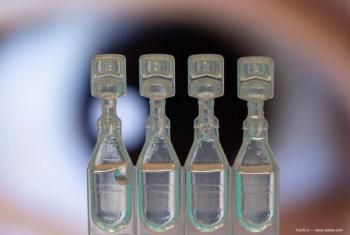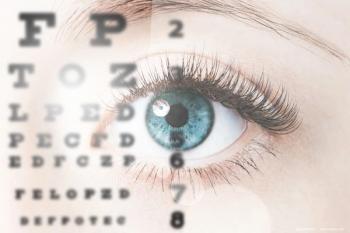
CK enhancement good tool for prior refractive patients
San Francisco-Although approved for initial hyperopic andpresbyopic correction, conductive keratoplasty (CK, Refractec) isan excellent tool for enhancement in cases of residual refractiveerror after myopic or hyperopic LASIK and in cases of patientsrequiring better near vision correction after crystalens (eyeonics)implantation, according to G. Peyton Neatrour, MD, who spoke aboutCK enhancement during the American Society of Cataract andRefractive Surgery annual meeting.
"This off-label approach is effective in improving near vision post-LASIK and with patients with presbyopic IOLs," reported Dr. Neatrour. "For somebody who had LASIK in their late 30s and now is hitting their mid- to late-40s, CK is a way to give them back some computer and reading vision without lifting the flap. It is especially suitable for those patients with dry eyes."
CK enhancement is also an option for those individuals with residual hyperopia after LASIK and a thin stromal bed. Instead of considering a 9-mm surface ablation that is slower to heal, CK is an option. "CK is a less invasive approach to correcting farsightedness than doing PRK or another surface ablation. It would be preferred over surface enhancement," Dr. Neatrour told Ophthalmology Times.
In the future, Dr. Neatrour, who is also medical director, Beach Eye Care, Virginia Beach, VA, may be offering CK enhancement for patients receiving the Implantable Collamer Lens (ICL, STAAR Surgical) for those with high myopia. "If these patients have overcorrection and are not good candidates for LASIK, CK is a tool that could help," Dr. Neatrour surmised.
"This is a new and important use for CK for dealing with our patients receiving presbyopic or phakic IOLs to ensure their satisfaction with the least invasive enhancements," he continued.
After myopic LASIK
In a retrospective analysis of patients who had previously been treated with myopic LASIK and then underwent CK enhancement for distance and near vision correction, Dr. Neatrour found good near visual acuity improvement from 20/73 to 20/23 with up to 12 months follow-up in 18 eyes treated for near. In the 28 eyes treated for distance correction, there was little improvement in visual acuity after CK with a preoperative visual acuity of 20/32 and postoperative visual acuity of 20/29. Before CK enhancement, these eyes had an average spherical equivalent (SE) of +0.21 D (range, –2.00 to +1.75 D) and average astigmatism of 0.57 D (range, 0 to 3.50 D).
In 26 eyes in the myopic LASIK group, Dr. Neatrour also corrected astigmatism, he said. Astigmatism correction with CK is performed at the time of surgery after spherical correction. The decision is based on the preoperative corneal topography by Orbscan (Bausch & Lomb) and the K readings in the operating room, he noted.
"After their eight-spot treatment (for sphere), I will look through the VISX laser to see if the illuminated ring is oval or distorted. I will also decide based on the reading of a hand-held keratometer. I make sure that what I see with the ring of light matches with what I am measuring objectively (the K readings)," explained Dr. Neatrour. "If it does, I will put in one spot at a time on the area of the cornea that is flattest. If the patient has high astigmatism (> 2 D), I may put two spots in at one time and remeasure."
Newsletter
Don’t miss out—get Ophthalmology Times updates on the latest clinical advancements and expert interviews, straight to your inbox.















































.png)


